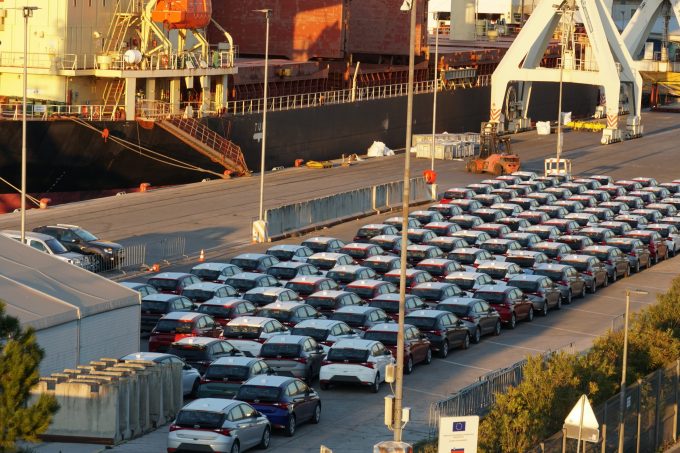Land grab from DP World terminal costs Belgian port €41.3m in fines
The state-run port of Antwerp-Bruges has been ordered to pay €41.3m ($44.67m) in fines after ...

Significant numbers of imported new vehicles are reported to be clogging up terminals at European ports, amid changing dynamics in auto markets.
Port, car industry and supply chain executives told the UK Financial Times a major factor in the congestion was that some Chinese electric vehicle (EV) manufacturers were not selling their cars in Europe as quickly as expected.
They also claimed ocean shipping delivery slots had been booked without ordering onward transport, which had led to lengthy dwell times at ports for vehicles that would normally be moved on to inland compounds and dealerships.
One source claimed there were EVs imported from China that had been sitting at European ports for up to 18 months.
Mike Sturgeon, executive director of Brussels-based Association of European Vehicle Logistics, told The Loadstar he believed the origin of the congestion at ports was the post-Covid recovery of the automobile market, which saw established OEMs building a high level of stocks again.
“Then came the surge in electric vehicle production, which has seen smaller manufacturers coming into the market and generating additional stock. Now, all OEMs are having to adapt to fluctuating consumption patterns, with a recent marked drop-off in demand for EVs resulting in stock they cannot sell, and the ports are bearing the brunt of it,” he said.
“Antwerp-Bruges and Bremerhaven, Europe’s largest automotive ports, have suffered a lot from congestion over the past 18 months, and not only because they’re full of vehicles. They’ve also had issues finding stevedores, so there’s been a labour element as well.
“These delays shouldn’t be happening, and it’s costing the vehicle logistics industry a lot of money.”
A spokesperson for Antwerp-Bruges said that, while congestion had not got worse over the past couple of months, it had not really eased either, adding: “But I’ve not heard of any cases where the car-carriers have not been able to offload.
“I think the disruption to ocean schedules in the Red Sea conflict gave the auto terminals at European ports time to catch their breath, albeit briefly, as re-routings via the Cape of Good Hope are now in place.”
And the spokesperson underlined that EVs produced in China, shipped to Europe, but yet to find buyers, was a prominent factor in the congestion.
“Ro-ro terminals are operating at almost full capacity and are the whole time in need of more space. On top of this, most established OEMs are changing their sales models from dealership to agencies, which means they will need more available space for their strategic stock at the terminals.
The spokesperson added: “And also, given the fact the likes of BYD and SAIC have ordered their own ro-ro vessels, of which the first ones have already called in Europe, Chinese OEM are definitely planning to establish their brands here (in Europe).”
Mr Sturgeon said congestion was perhaps worst at the Italian port of Livorno.
“One of our members, UECC, has experienced some serious delays in its ships being able to dock at Livorno, which is massively expensive and, of course, if ships aren’t moving cars that’s capacity effectively taken out of the market.
“I think the problem at Livorno is a combination of a shortage of space in vehicle compounds at port terminals and shortage in road haulage capacity to move vehicles out of the ports to inland compounds.”
And Mr Sturgeon cannot see any end to the congestion at Europe’s ports. He said: “There is some rebalancing of stocks going on, but we continue to see volumes coming in from everywhere, and there’s no sign this is going to reduce.
“Nobody’s turning off production lines and making fewer cars at a time when sales are relatively static across Europe.”
Comment on this article